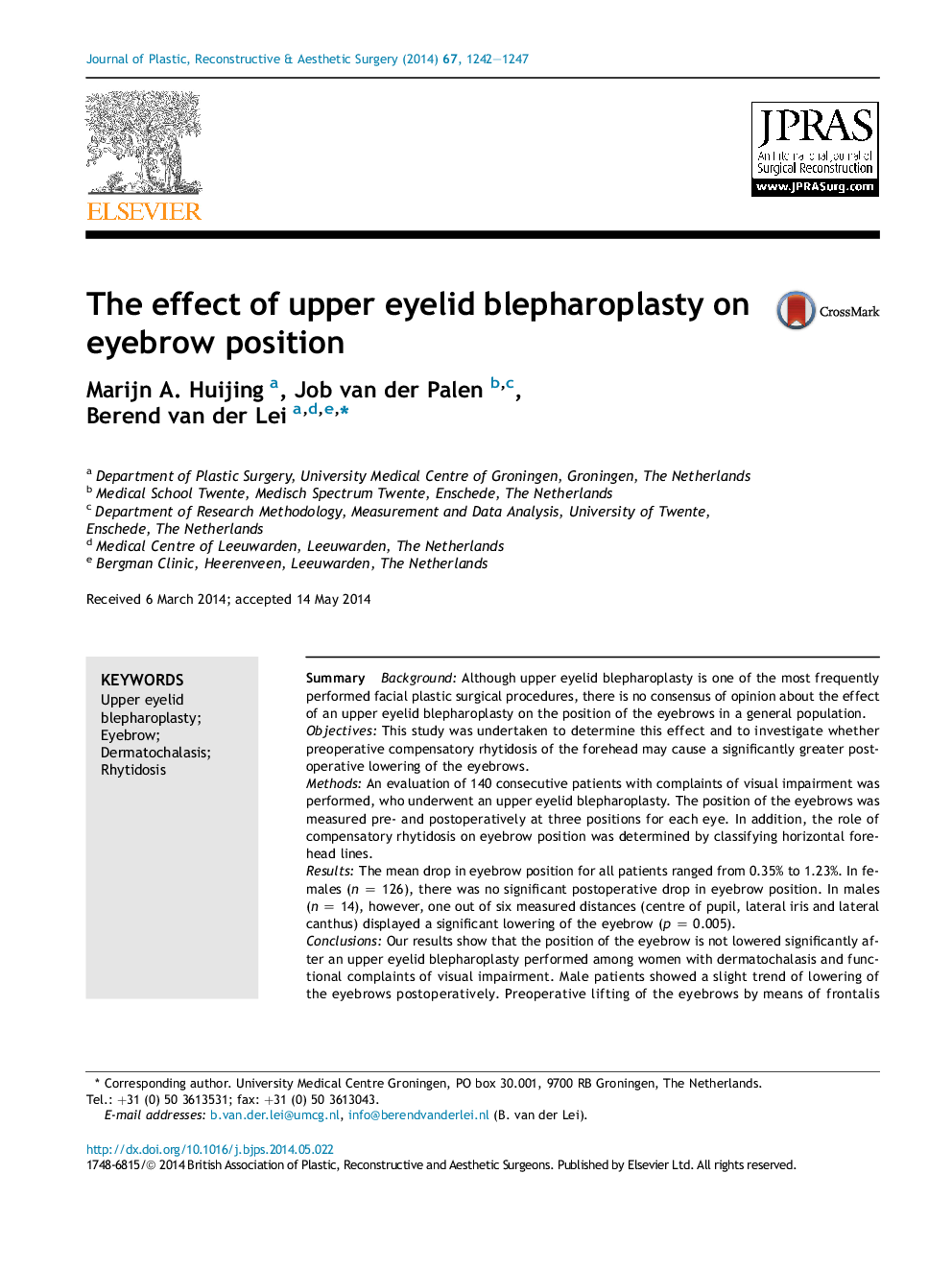| Article ID | Journal | Published Year | Pages | File Type |
|---|---|---|---|---|
| 4117608 | Journal of Plastic, Reconstructive & Aesthetic Surgery | 2014 | 6 Pages |
SummaryBackgroundAlthough upper eyelid blepharoplasty is one of the most frequently performed facial plastic surgical procedures, there is no consensus of opinion about the effect of an upper eyelid blepharoplasty on the position of the eyebrows in a general population.ObjectivesThis study was undertaken to determine this effect and to investigate whether preoperative compensatory rhytidosis of the forehead may cause a significantly greater postoperative lowering of the eyebrows.MethodsAn evaluation of 140 consecutive patients with complaints of visual impairment was performed, who underwent an upper eyelid blepharoplasty. The position of the eyebrows was measured pre- and postoperatively at three positions for each eye. In addition, the role of compensatory rhytidosis on eyebrow position was determined by classifying horizontal forehead lines.ResultsThe mean drop in eyebrow position for all patients ranged from 0.35% to 1.23%. In females (n = 126), there was no significant postoperative drop in eyebrow position. In males (n = 14), however, one out of six measured distances (centre of pupil, lateral iris and lateral canthus) displayed a significant lowering of the eyebrow (p = 0.005).ConclusionsOur results show that the position of the eyebrow is not lowered significantly after an upper eyelid blepharoplasty performed among women with dermatochalasis and functional complaints of visual impairment. Male patients showed a slight trend of lowering of the eyebrows postoperatively. Preoperative lifting of the eyebrows by means of frontalis muscle activity did not influence the position of the eyebrows postoperatively, although forehead lines did seem to diminish significantly.
